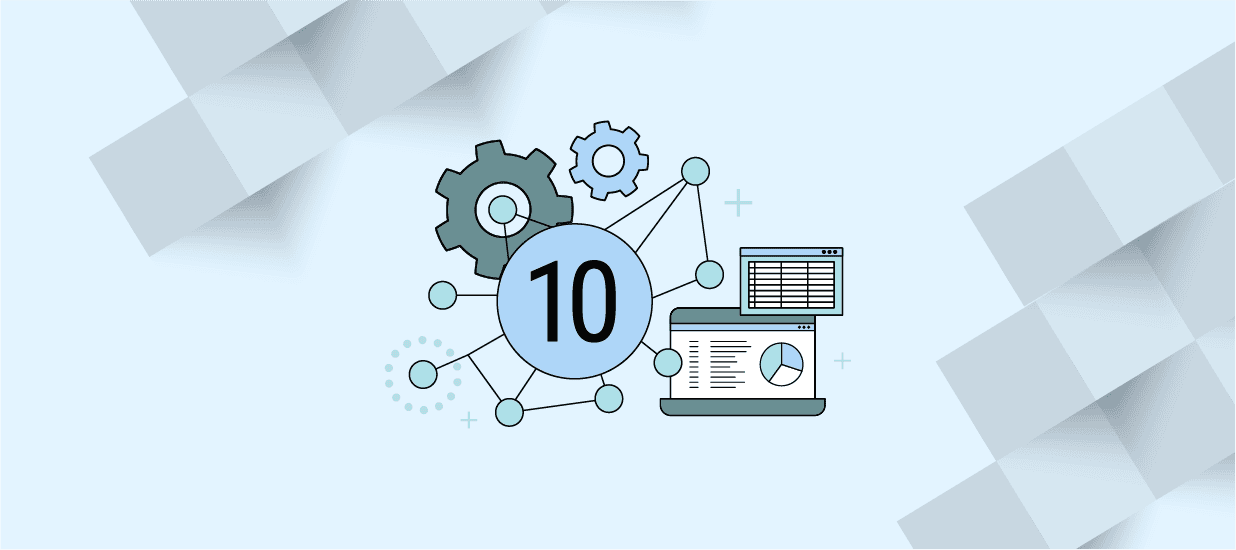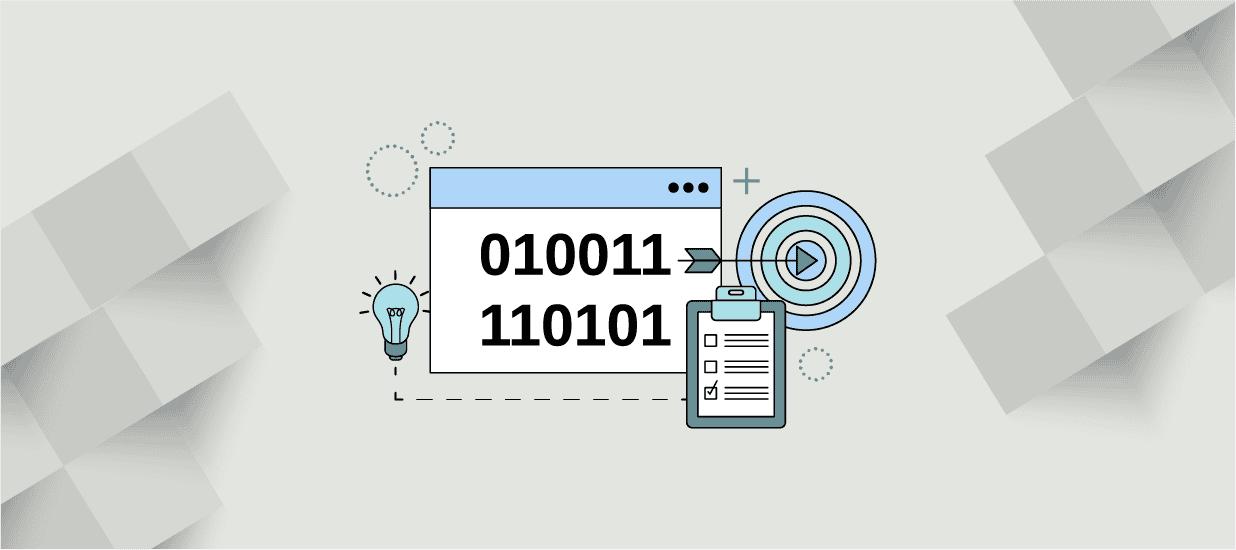Data quality is a critical aspect of any business. If your data is inaccurate, you will make poor decisions that can hurt your company.
In this blog post, we will discuss the 6 dimensions to measure data quality in your company. By understanding these dimensions, you can start to improve your data quality and make better business decisions
Read on to understand more about these dimensions.
Data quality plays an important role in every data strategy. To ensure that your data is of good quality, you should measure it against these six dimensions:
- Accuracy
- Completeness
- Consistency
- Timeliness
- Validity
- Uniqueness
Let’s take a closer look at each of these dimensions.
1. Accuracy
What is Accuracy?
Accuracy refers to the degree of closeness between a measured value and the actual value. In other words, it is the degree to which your data is free from error.
For example, if you are measuring the sales efforts of your employees, you want to make sure that the data you are collecting is accurate. This means that the sales figures should be close to the actual sales numbers.
If your data is not accurate, it can lead to poor decision-making. Data with low accuracy will not be useful for deeper data analysis work. You simply won’t be able to create the next biggest AI art generator with bad data!
It is also important to note that accuracy is different from precision. Precision refers to the degree of closeness between multiple measurements of the same value
How to Measure Accuracy?
There are a few ways that you can measure accuracy.
One way is to use a method called “validation.” This is when you compare your data to another source of data (such as financial records) to see if there are any discrepancies.
Another way to measure accuracy is by using something called “error tolerance.” This is the degree to which your system can tolerate errors.
For example, if your data is being used to track inventory levels, you need to have a low error tolerance. This means that even a small error could lead to serious consequences (such as a stock-out).
What is an Acceptable Level of Accuracy?
This depends on your business and the type of data you are collecting.
For example, if you are measuring something like employee satisfaction, a small error might not be a big deal. But if you are measuring something like inventory levels, even a small error could have major consequences.
2. Completeness
What is Completeness?
Completeness refers to the degree to which all required data is present.
For example, if you are collecting customer feedback, you want to make sure that all of the required fields are filled out.
If some fields are missing, it can lead to incomplete data. Incomplete data can be just as bad as inaccurate data. Without having the complete dataset, biases may appear when running more advanced data science applications in business.
How to Measure Completeness?
You can measure completeness using “data profiling.” This is when you analyze and examine your data to see if there are any patterns or missing data. This process identifies any completeness issues in your data.
For example, you might notice that customer feedback is often missing the “comments” field.
What is an Acceptable Level of Completeness?
This depends on your business and the type of data you are collecting.
For example, if you are collecting customer feedback, you might want to have a completeness rate of 95%. This means that only five out of every hundred customer feedback forms can contain missing data.
But if you are collecting data that is not as critical, you might be able to have a lower completeness rate.
How Can You Ensure Completeness?
- Data Imputation
- Data Validation
Data imputation can be done by filling in the missing data with the average value of the other data points. This is useful for numerical data, where an average would make sense.
Data validation can be implemented in forms that collect data. This ensures that all data comes in a format that is acceptable and complete. For example, a survey form can enforce the collection of email addresses to ensure completeness.
3. Consistency
What is Consistency?
Consistency refers to the degree to which data is formatted in the same way.
For example, in healthcare, if you are recording patient data like case notes, you want to make sure that all of the case notes are formatted in the same way. This also applies to clinical codes as well.
If they are not, it can be difficult to compare and analyze the data. Inconsistent data can also lead to errors when running data science and analytics applications.
How to Measure Consistency?
You can measure consistency using “data profiling” as well.
You need to decide what level of consistency is acceptable for your business and then make sure that your data meets this standard.
How Can You Ensure Consistency?
Here are some ways to ensure consistency:
- Data Standardization
- Data Documentation
Data Standardization
Data cleansing can be used to standardize data. This means that the data is converted into a format that is consistent and can be easily compared.
For example, you might standardize dates so that they are all in the same format (dd/mm/yyyy). This makes it easier to compare dates and find trends.
Data cleansing can be done manually or using automated tools.
Data Documentation
Documenting your data can also help to ensure consistency.
This is because you can document the format of the data and what each field represents. This can be useful for new team members or when you need to revisit the data after a long period of time.
Data documentation can be done using a data dictionary. This is a tool that lists all of the fields in a dataset and what they represent.
4. Timeliness
What is Timeliness?
Timeliness refers to the degree to which data is available when it is needed.
This is important because data that is not timely can be inaccurate. For example, if you are trying to track keyword rankings, data has to be refreshed at timely intervals to remain useful. Outdated ranking information can be inaccurate.
How to Measure Timeliness?
You can measure timeliness by using the timestamp function in your data collection software. This will give you an accurate measure of how long it took to collect the data.
You can also use this measure to calculate the average time it takes to collect data from different sources.
Timely data is important for companies because it helps them make better decisions. If you have timely data, you can make decisions that are based on current information.
Out-of-date data can lead to bad decision-making. For example, if you are using data that is six months old to make a decision about a new product, you may not have the most accurate information.
What is an Acceptable Level of Timeliness?
This is highly dependent on the needs of your business and how fast you need feedback.
Here are some questions you can use to assess your level acceptable level:
- How soon after an event occurs do you need the data?
- Are you willing to tolerate some lag time in order to get more accurate information?
- Do you have real-time requirements?
How Can You Ensure Timeliness?
Here are some ways to ensure timeliness:
- Data Automation
- Data Integration
- Real-Time Data Collection
Data Automation
One way to ensure timeliness is to automate your data collection. This means that you set up a system where data is collected and processed without any human intervention. This can be done using software or hardware that is designed to collect data automatically.
For example, you might use Google Analytics to track web traffic automatically as they enter your website. This data can then be processed and analyzed to give you insights into what your customers want.
Data Integration
Another way to ensure timeliness is to integrate your data sources. This means that you combine data from different sources so that you have one complete data source. This is where the benefits of a data warehouse will shine.
This can be done manually or using software that is designed to do data integration.
One example of data integration is combining data from a CRM system with data from your email marketing software using ETL tools. This will give you a more complete view of your marketing efforts.
Real-Time Data Collection
A third way to ensure timeliness is to collect data in real-time. This means that you are constantly collecting data as it is generated.
This can be done using sensors or other devices that collect data in real time. For example, health data can be collected using wearables in real-time.
To process real-time data, you might even need some data engineering to set up a good cloud data lake or warehouse.
5. Validity
What is Validity?
Validity refers to the degree to which data accurately represents what it is supposed to represent. If your data is not representative of what it is, further analysis will be highly inaccurate.
How valid your data is depends on your business requirements. For example, if the data collected about contact numbers do not fulfill the exact length and number of digits, the data can be seen as invalid.
How to Measure Validity?
Comparison to Truth
Another way to measure validity is to compare the data to an external source of truth. This could be something like industry benchmarks or expert opinion.
For example, if you are trying to measure customer satisfaction, you might compare your data to industry benchmarks. If your data is lower than the benchmark, then you know that there is an issue with validity.
6. Uniqueness
What is Uniqueness?
Uniqueness refers to the degree to which data can be uniquely identified. This is important because you need to be able to differentiate two very similar data points from each other using unique identifiers.
For example, if you’re working in logistics and you have two products that are very similar, you need to have unique SKU numbers to separate tracking items correctly.
How to Measure Uniqueness?
To measure uniqueness, get unique counts of all your data points and see if the number matches the number of data points that you have.
For example, if you have a list of customers, you can get a count of all the unique customer IDs. If the number of unique customer IDs is less than the total number of customers, then you know that there are duplicates in your data.
To fix this, you can either remove the duplicates or add unique identifiers to each data point.
Final Thoughts
These are six dimensions of data quality that you can use to measure the quality of your data.
By ensuring that your data is high quality, you can be sure that you are making the best decisions for your business.
Continue Learning
Deliver critical insights that power business strategy with Pragmatic’s course, Business-Driven Data Analysis. Learn a proven, repeatable approach you can leverage across data projects and toolsets to deliver timely data analysis with actionable insights. Practice new skills in different contexts and levels of difficulty, discuss with peers and share feedback for improvement.
Author
-

Austin Chia, a data analytics expert with a decade of experience, has contributed to organizations such as IBM, Singapore Armed Forces, and Nanyang Technological University. Armed with top skills in Data Science, Python, and SEO, he's made significant impacts at Speedoc, Singapore National Eye Centre, and more. For questions or inquiries, please contact [email protected].
View all posts







